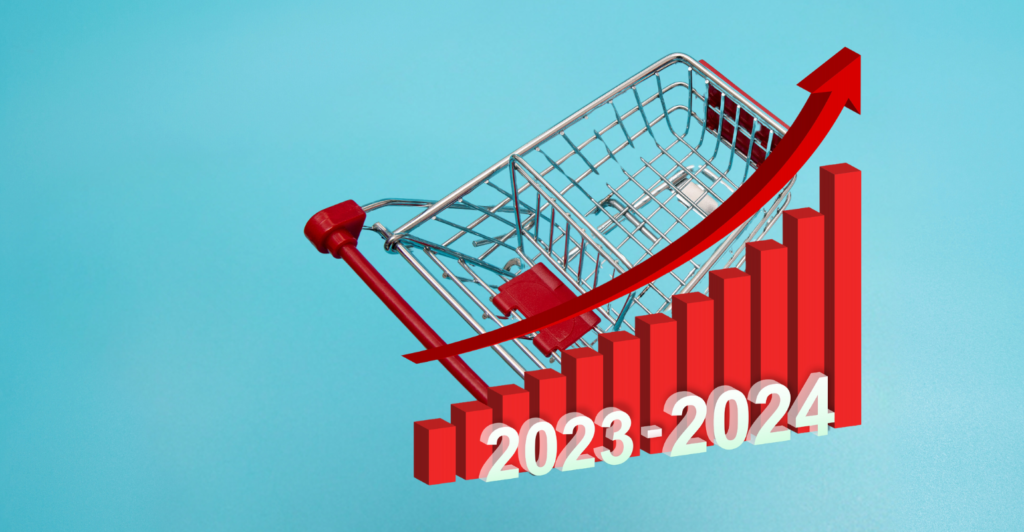 Joel Percy is an experienced loyalty and CRM executive with deep retail personalization and data monetization expertise. At Loblaw Companies in Canada, he helped design, launch and run PC Plus, one of the world’s first fully personalized digital rewards programs. He has also consulted with retailers around the globe on the design of personalized marketing programs. He is currently the regional director at Eagle Eye, where he helps clients grow loyalty and drive sales by building digital connections with their customers.
Joel Percy is an experienced loyalty and CRM executive with deep retail personalization and data monetization expertise. At Loblaw Companies in Canada, he helped design, launch and run PC Plus, one of the world’s first fully personalized digital rewards programs. He has also consulted with retailers around the globe on the design of personalized marketing programs. He is currently the regional director at Eagle Eye, where he helps clients grow loyalty and drive sales by building digital connections with their customers.
With 2023 firmly in the books, it’s time to consider what 2024 will bring for supermarkets, grocers, and retailers of all stripes. The grocery industry enjoyed significant revenue growth in the first full post-pandemic year. Will this new year hold the same?
Forecasts are pointing to yes. According to Coresight Research, in July 2023, the U.S. grocery industry was expected to see growth rates of 5.6% for a total value of $1.5 trillion. Despite inflationary pressures, this level of growth indicates that consumers continue to spend.
Where is this growth coming from? One key source is the continued rise in digital sales; grocers are already seeing significant growth from online channels. Recent data indicate that the U.S. online grocery market was worth $20.66 billion in 2019 and is expected to reach $41.33 billion by 2027.
Regardless of channel, however, creating an optimized customer experience will be critical for grocers looking to increase their growth in 2024. Although shoppers are still spending, Eagle Eye’s Grocery’s Great Loyalty Opportunity report reveals that 41% of Americans now shop less overall.
With these facts in mind, what are current consumer shopping behaviors telling grocery CEOs is in store for 2024?
Advanced personalization is the key to loyalty
Assuming all consumers are looking for discounts and discounts alone is an incorrect conclusion. Although price is a massive influencer, shoppers look for more. A Pymnts.com report from February 2023 indicates that 77.3% of Americans said convenience influenced where they shop, which was the leading factor.
The concept of “value” as automatically meaning discounts has also been contraindicated by our research, which found that 62% of North Americans said discounts were the most critical factor in choosing a brand, but 73% said it was value.
“Value” often means giving customers what they want when they want it… and AI is poised to help grocers do precisely that. AI is expected to enable grocers to deliver personalization at scale, and those that invest in real-time/interactive digital content and communications will ultimately be the differentiating factor.
Again, Eagle Eye research bears out the benefits of this approach. Approximately 84% of consumers said personalized offers would help them to save money on the shelf. Similarly, 71% of consumers said that real-time promotions while shopping would make them consider a product.
Grocers must move away from serving a limited number of cookie-cutter offers to delivering offers uniquely designed for every shopper. According to Think With Google, 40% of shoppers spent more when their experience was personalized.
Some big retail names are already well ahead of the game.
Starbucks is considered a stand-out retailer in this respect. With AI, it’s conducted its mobile makeover and now sends users unique offers based on various behavioral metrics. Currently, Starbucks has 400,000 variations of personalized messages that their mobile app can send.
But this isn’t an optional extra, as research from AdAge found. Consumers have become so used to individualized interactions that 44% said they would shop elsewhere if they didn’t receive the personalization they expected from a specific brand or retailer. This illustrates that relying on traditional discount-heavy promotional strategies isn’t enough to succeed in the grocery landscape in 2024.
Mobile “phone-out” shopping for 2024
The mobile grocery experience has become a staple of the North American market. Studies repeatedly show consumers’ desire to shop via mobile, with 88% of people having at least one shopping app on their phone.
But it’s a mistake to assume that online and mobile shopping are distinct from the in-store experience. Think With Google found that 56% of in-store shoppers used their phones to research items or even shop while they were in a store in just the last week.
In other words, grocers must recognize and take advantage of this behavior. With consumers using their phones as personalized shopping companions, it’s an opportunity to create a more dynamic shopping experience. According to Deloitte, this is something that can repay its investment many times over, with 56 cents out of every dollar spent in brick-and-mortar stores being influenced by digital interactions.
Whether allowing customers to scan items in-store to get more information about them on their phones or even using gamification to make shopping more fun, grocers have plenty of chances to harness the power of phone-out shopping.
The latter could provide grocers with a competitive edge. Eagle Eye research indicates that 64% of North Americans are willing to or actively participate in various forms of gamification, such as contests, games, and challenges. Yet only 43% of loyalty programs/apps have these features.
Entering the era of the one shopping channel
Today, grocers have countless shopping channels. Each one may have a completely different content marketing strategy and associated data.
Brands not using converged content and breaking down data siloes are not taking full advantage of the assets at their disposal. Combining data, content, and customer insights enables retailers to build more holistic customer views and offer a genuinely omnichannel experience.
The Harvard Business Review highlighted one of the biggest obstacles retailers had to adopting advanced analytics was the siloed nature of existing data. Retail brands must investigate how they can break the siloes inherent in their data to build a more streamlined organization and create the single customer view they need to generate actionable insights and fuel individualized marketing strategies.
Grocers cannot produce advanced personalization or a genuine omnichannel experience without first breaking down these siloes. The data is already there. It just takes businesses to figure out how to harness it properly.
Unique experiences every time
Everything in this article can be crystallized into a desire for unique shopping experiences that match individuals wherever and wherever they shop. By embracing emerging technologies like AI and rethinking their approaches to omnichannel interactions, grocers can make 2024 the year that they transform traditional retail practices into modern, customer-centric shopping experiences.
But to do so, they must adapt quickly to changing customer habits and expectations. Grocery retailers that are already focused on expanding their personalization capabilities, making shopping a phone-out activity, and breaking down data and content siloes are in the best position to capitalize on 2024 trends.


